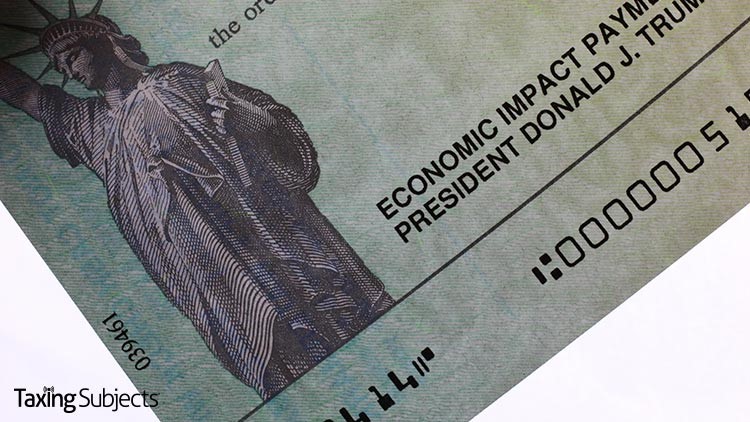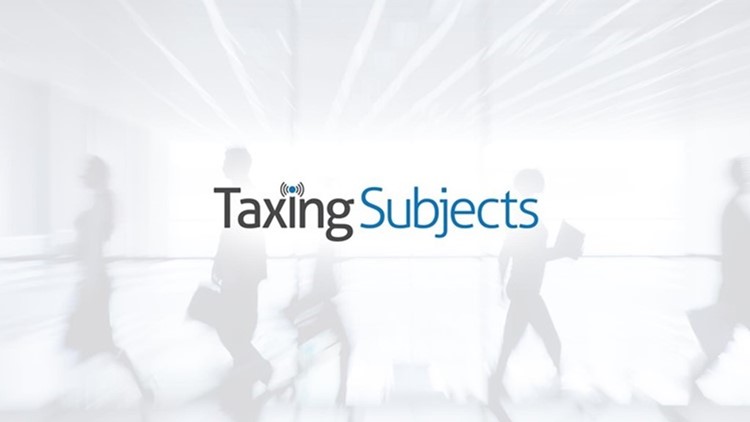by | Sep 13, 2020 | Tax Tips and News
The Internal Revenue Service has good news for practitioners and taxpayers who speak a language other than English: Tax information and assistance is being translated into more languages than before.
The language upgrade features a big boost to Spanish speakers, who will find the Form 1040 now in Spanish.
In addition to being available in English and Spanish, the 2020 Form 1040 will also give taxpayers the opportunity to indicate whether they prefer to be contacted in a language other than English – a new feature that’s available for the first time next filing season.
There are other changes to popular publications as well. Publication 1, Your Rights as a Taxpayer, is now available in 20 different languages. An updated version of Publication 17, Your Federal Income Tax, will be available early next year in seven languages, including English, Spanish, Vietnamese, Russian, Korean and Chinese.
The expanded language availability is part of the agency’s effort to reach its goal of helping everyone – no matter where they live, what their background is, or what language they speak.
“Our diverse workforce is extremely proud to be able ease the inherent burden on taxpayers attempting to voluntarily comply with their tax responsibilities, including people who are more comfortable with other languages,” said IRS Commissioner Chuck Rettig. “We are continually increasing the information and services available in other languages as well as expanding our interpreter services so that we can interact in a more respectful manner with taxpayers in their most comfortable language. We expect to continue these important efforts as we work to earn the trust and respect of every American.”
As part of the expansion, many of the webpages on the IRS.gov site are now available in seven languages; basic tax information is now available in 20 languages on IRS.gov.
Taxpayers who interact with an IRS representative now have access to over-the-phone interpreter services in more than 350 languages.
The IRS has also recently started to insert information about translation services and other multilingual options into high-volume notices sent out to taxpayers.
The IRS is raising the language bar.
While assistance has long been provided in Spanish and some other languages, the IRS is increasing the number of materials available in multiple languages. It’s also expanding its outreach with multilingual community partners.
The agency recently worked with partners in the tax and low-income communities and provided them with information and resources that they quickly translated and made available in some 35 languages. The material promoted the Economic Impact Payments.
The success of the effort has led the IRS to continue the work on other agency priorities, including the 2021 filing season.
In the coming months and years, the IRS says it will continue to expand the availability of the most widely used forms and publications in multiple languages. Plans also include increasing the number of web pages on IRS.gov that are accessible in seven languages later this year.
– Story provided by TaxingSubjects.com
by | Sep 10, 2020 | Tax Tips and News
The Internal Revenue Service says it will start sending out letters this month to a group of taxpayers that may have missed out on receiving Economic Impact Payments (EIPs).
The letters, aimed at some 9 million Americans who don’t normally file a federal income tax return, notify them that they may be eligible for an EIP—but they must register in order to claim one.
These taxpayers have until October 15 to register their claim so they can receive a payment by the end of the year.
Individuals can receive up to $1,200, and married couples can receive up to $2,400. People with qualifying children who were under age 17 at the end of 2019 can get up to an additional $500 for each qualifying child.
Non-Filers can still qualify for an Economic Impact Payment!
The IRS is sending letters to people who haven’t filed a tax return for either 2018 or 2019. This includes those who don’t typically have a filing requirement because they appear to have very low incomes based on W-2s, 1099s, and other third-party statements available to the IRS. Despite the lower incomes though, many of these people are still eligible for an Economic Impact Payment.
“The IRS has made an unprecedented outreach effort to make sure people are aware of their potential eligibility for an Economic Impact Payment this year,” said IRS Commissioner Chuck Rettig. “Millions who don’t normally file a tax return have already registered and received a payment. We are taking this extra step to help Americans who may not know they could be eligible for this payment or don’t know how to register for one. People who aren’t required to file a tax return can quickly register on IRS.gov and still get their money this year.”
The letter, termed Notice 1444-A by the IRS, is written in both English and Spanish. The mailing is expected to start around September 24 and will go out from an IRS address. To help address fraud concerns, a copy of the letter will be available on IRS.gov.
Go online to register.
The letter urges eligible individuals to register by October 15 for a payment by using the free Non-Filers: Enter Payment Info Here tool.
Over 7 million people have used the Non-Filers Tool so far to register for their payment. If a person is unable to access the Non-Filers Tool they can submit a simplified paper return using the procedures outlined in the Economic Impact Payments FAQs on IRS.gov.
It should be noted that simply receiving a letter is not a guarantee that the recipient will get an Economic Impact Payment.
The IRS puts the qualifications this way: “An individual is likely eligible if he or she is a U.S. citizen or resident alien; has a work-eligible Social Security number; and can’t be claimed as dependent on someone else’s federal income tax return. However, there can be a variety of situations that could affect an individual’s eligibility.”
For information on the EIP eligibility requirements, check out the Economic Impact Payment eligibility FAQs on IRS.gov.
The registration deadline for non-filers to claim an Economic Impact Payment using the Non-Filers Tool is Oct. 15, 2020. If they cannot make the deadline, people can also wait until next year and claim the credit amount on their 2020 federal income tax return by filing in 2021.
Taxpayers who are required to file either a 2018 or a 2019 tax return should file the return but should not use the Non-Filers Tool.
– Story provided by TaxingSubjects.com
by | Sep 9, 2020 | Tax Tips and News
When the Internal Revenue Service announced this summer, it was temporarily expanding the use of e-signatures on IRS forms, a number of professional tax groups applauded. One of those is the American Institute of CPAs (AICPA). Now the group is recommending the temporary measures be expanded and made permanent.
The original notice alerted IRS employees they could temporarily accept scanned or digital signatures as well as allow the sharing of certain documents by email in order to cope with the constraints mandated by the COVID-19 pandemic.
In June, the IRS extended the guidance expiration date from the original July 15 date to the end of 2020. Despite the extra time frame, however, the original relief from so-called “wet” signature requirements was very limited in its scope and did not include documents associated with return filings or extensions.
The AICPA wants the IRS relief to become permanent.
The CPA group has submitted a formal letter of request to the IRS that asks the agency to expand the scope of its original memo to allow all electronic file signature authorization forms—including on non-income tax returns and paper-filed returns. In response, the IRS has issued a new memo allowing for a temporary deviation from the handwritten signature requirement for a limited number of tax forms.
The next step, AICPA members say, is to make the expanded e-signatures permanent.
“We greatly appreciate the IRS’s decision to expand the scope of their e-signature requirements. By expanding the scope of relief beyond collection activities, the IRS is lessening the burden on taxpayers and tax practitioners in a significant way,” said AICPA Vice President of Taxation, Edward Karl, CPA, CGMA. “The steps taken by the Service helps the nation navigate difficult circumstances. We encourage the IRS to continue to work to make this relief permanent.”
At present, some 11 states have provided pandemic-related guidance allowing e-signature use on tax returns. The AICPA says these states “recognize the health and technology challenges arising from COVID-19 and understand how these challenges make it difficult for practitioners and clients to obtain handwritten signatures.”
Source: “AICPA Applauds IRS Temporary Acceptance of E-Signatures, Urges Permanent Relief“
– Story provided by TaxingSubjects.com
by | Sep 1, 2020 | Tax Tips and News
Businesses that were wondering how to handle the upcoming “payroll tax holiday” created by a Presidential Memorandum signed earlier this month received an answer late last week. The Internal Revenue Service published a notice that explains the upcoming Social Security tax withholding deferral.
This guidance comes just in time, since the tax relief officially begins tomorrow.
How long is the Social Security tax withholding deferral period?
IRS Notice 2020-65 explains that certain wages paid from September 1, 2020, to December 31, 2020, may be deferred to the following period (January 1, 2021, through April 30, 2021). If employers do not pay the deferred tax by May 1, 2021, “interest, penalties, and additions to tax will begin to accrue.”
What wages are eligible for deferral?
The IRS says applicable wages and compensation paid during the deferral period are defined in section 3121(a) and section 3231(e)3. In the press release, they identify some limitations.
“The employee Social Security tax deferral may apply to payments of taxable wages to an employee that are less than $4,000 during a bi-weekly pay period, with each pay period considered separately,” the IRS writes. “No deferral is available for any payment to an employee of taxable wages of $4,000 or above for a bi-weekly pay period.”
For more information about the deferral of certain employee Social Security taxes, read Notice 2020-65.
Sources: IR-2020-195; Notice 2020-65
– Story provided by TaxingSubjects.com
by | Aug 29, 2020 | Tax Tips and News
The Internal Revenue Service has approved the use of e-signatures on certain forms that can’t be filed electronically. The move comes in response to the coronavirus pandemic, in order to protect the health of taxpayers and tax professionals alike.
The change helps reduce in-person contact while lessening the risks to taxpayers and tax professionals by allowing them to work remotely and file forms in a timely manner.
“We take the health and safety of the nation’s taxpayers, the tax professional community and our employees very seriously,” said IRS Commissioner Chuck Rettig. “Expanding the use of digital signatures is an important step during COVID-19 to help tax professionals. We understand the importance of digital signatures to the tax community, and we will continue to review our processes to determine where long-term actions can help reduce burden for the tax community, while appropriately balancing that with critical security and protection against identity theft and fraud.”
The Form 1040, U.S. Individual Income Tax Return, already uses an electronic signature when filed electronically, either by using a taxpayer self-selected PIN if self-prepared, or a tax-preparer selected PIN if using a tax professional.
More than 90% of Form 1040s are filed electronically. The IRS recommends taxpayers consider e-filing forms this year whenever possible due to COVID-19.
Which forms will temporarily accept e-signatures?
At least 10 forms have been earmarked to take a digital signature if mailed by or on Dec. 31, 2020:
- Form 3115, Application for Change in Accounting Method;
- Form 8832, Entity Classification Election;
- Form 8802, Application for U.S. Residency Certification;
- Form 1066, U.S. Income Tax Return for Real Estate Mortgage Investment Conduit;
- Form 1120-RIC, U.S. Income Tax Return For Regulated Investment Companies;
- Form 1120-C, U.S. Income Tax Return for Cooperative Associations;
- Form 1120-REIT, U.S. Income Tax Return for Real Estate Investment Trusts;
- Form 1120-L, U.S. Life Insurance Company Income Tax Return;
- Form 1120-PC, U.S. Property and Casualty Insurance Company Income Tax Return; and
- Form 8453 series, Form 8878 series, and Form 8879 series regarding IRS e-file Signature Authorization Forms.
These forms cannot be e-filed and are generally printed and mailed. The IRS will not specify which digital signature product tax pros have to use.
The IRS also assures it will monitor this temporary option for e-signatures and determine if additional steps are needed.
– Story provided by TaxingSubjects.com
by | Aug 27, 2020 | Tax Tips and News
Some 50,000 individuals who had a portion of their Economic Impact Payment diverted to pay their spouse’s past-due child support will soon get a check to make up the difference.
The Internal Revenue Service says the catch-up payments are due to be issued in early-to-mid-September. They will be mailed as checks to eligible spouses who submitted Form 8379, Injured Spouse Allocation, along with their 2019 federal income tax return, or in some cases, their 2018 return.
These spouses do not need to take any action to get their money, since the IRS will automatically issue the portion of the EIP that was applied to the other spouse’s debt.
The IRS says it understands that some individuals didn’t file Form 8379 and didn’t get their portion of the Economic Impact Payment for the reasons mentioned. These individuals also don’t need to take any further action and don’t need to submit Form 8379.
The IRS stresses that while it doesn’t have a timeframe, the agency will automatically issue the portion of the EIP that was applied to the other spouse’s debt at a later date.
To check the status of their payment, affected taxpayers can go online to the IRS’ Get My Payment Tool, which is available only on the IRS.gov website.
Taxpayers can also get more information in the Receiving My Payment section of the Frequently Asked Questions in the Economic Payment Information Center on IRS.gov.
– Story provided by TaxingSubjects.com






